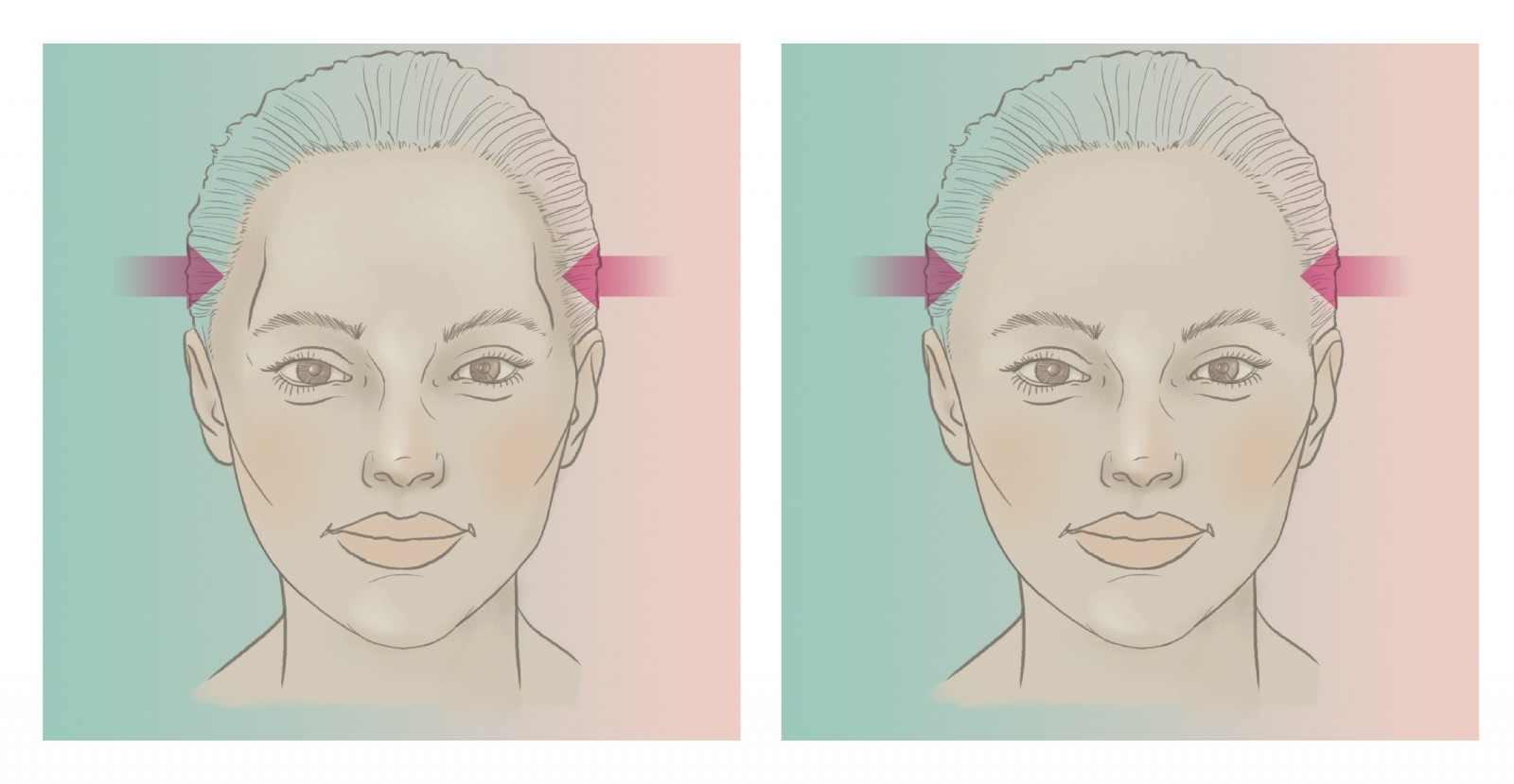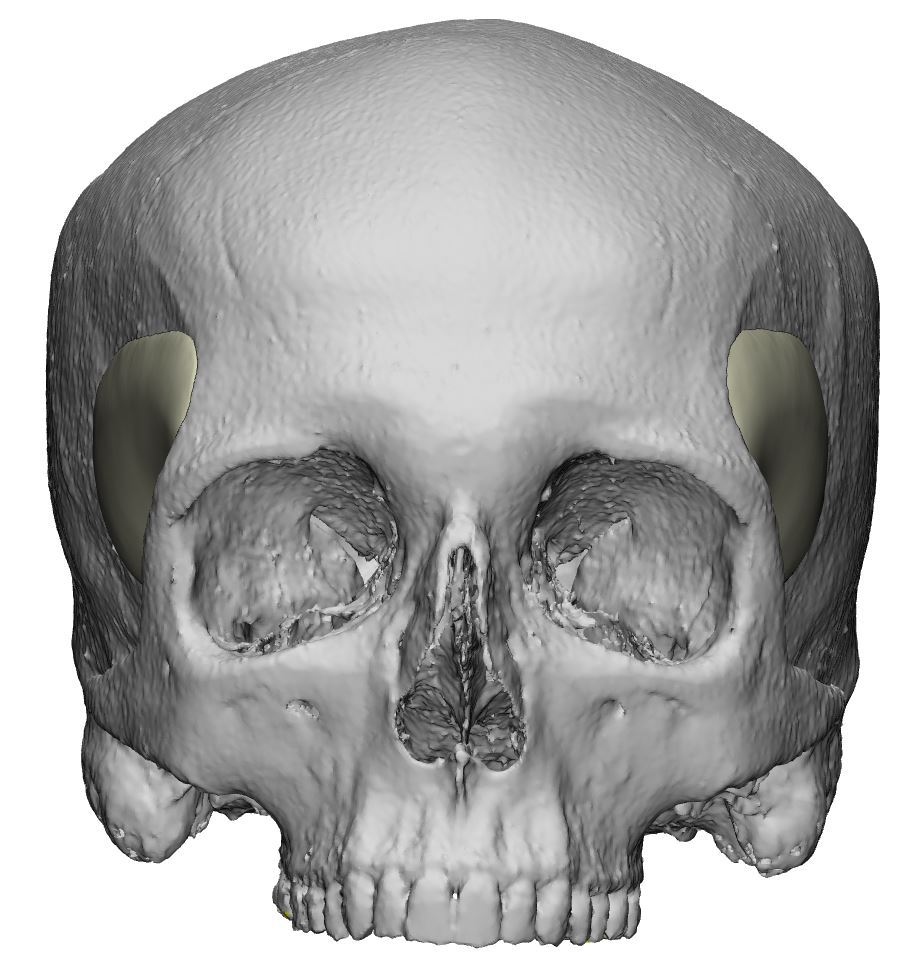Temporal peek implants
Custom-made PEEK implants for the temples
Besides the forehead and eye area, the most significant characteristic of a feminine face is the overall contour. Which is, to a large extent, determined by the shape of the temples. Sunken temples give the forehead an hourglass-like, masculine look. A look considered unattractive by many women. Custom-PEEK implants in the region of the temples can be a good solution as part of your facial feminization surgery. Before and after temporal PEEK implants
Before and after temporal PEEK implants
What are 'PEEK' implants?
Polyetheretherketone (PEEK) is a synthetic material that was used initially in spine and hip surgery. It has the properties of being:
- biocompatible;
- resistant to thermal and ionizing radiation;
- and biomechanically resembles cortical bone.
These favourable characteristics have led to the increasing use of PEEK implants for calvarial defects, which remain a significant reconstructive challenge, but also in aesthetic surgery.
Gender of the temples
The male temples tend to be a bit sunken-in. They have more "hollow" temples. Female temples are fuller giving the face a more oval look.
Feminizing the temples
Having Custom-made PEEK implants of the temples placed can give the face a more oval feminine look and fill up the hollow temple area. Usually, the placement of the PEEK implants is combined with a forehead recontouring, as the access to the area where the implants need to be placed is already created during forehead recontouring.

Preparing for the procedure
In preparation for the surgery, a CT-scan of the skull needs to be made. For specifications of the CT-scan needed please look here.
A proposal for the shape of the implants will be made by Dr van de Ven in collaboration with the manufacturer of the implants. It will be sent to you by e-mail, so you can see what the implants will look like.
After we have received your agreement, the implants will be manufactured.
Procedure
- General anaesthesia—General anaesthesia is usually required for placement of custom- made PEEK implants in the region of the temples.
- Incisions—Usually an incision is made along the hairline. The incision is made just like it would be made during scalp advancement surgery (forehead reduction). If you don’t need a hairline lowering, the so-called "bicoronal" incision made inside the hair is a better option.
- The forehead skin is pulled forward to reveal the bone.
- The temporal muscle is detached from the bone as far as is necessary to insert the implants that are then fixated using Titanium screws.
- The skin will be closed in layers as usual.
Recovery
- Hospital—You will spend one night at the hospital following surgery.
- Pain—Pain may occur for a few days and is manageable with normal painkillers.
- Work—Many patients can go back to work within two weeks following this surgery (as a stand-alone procedure).
- Sport—Avoid physical activity that causes sweating or a rise in blood pressure for eight days.
- Sutures—Sutures are self-dissolving. They dissolve in about a week's time.
- Forehead numbness—Expect your forehead to be numb for about 3 months.
Complications
- Changed feeling of the scalp—Because the skin is detached from the bone during the procedure, it is possible the feeling in the scalp changes. In most of the patients, sensation returns to normal within the year, but some patients report the feeling doesn’t return to normal 100%. Most don’t report this as a problem, but rather as something they noticed.
- In theory, infection of the implants is possible but has so far never occurred. In such a case, antibiotics would be administered. Worst case this doesn’t stop the infection and the implants have to be removed.
We are doing our very best to keep this information up-to-date. In case you see anything that no longer seems accurate, or in case you have a question, please fill out the form below!

